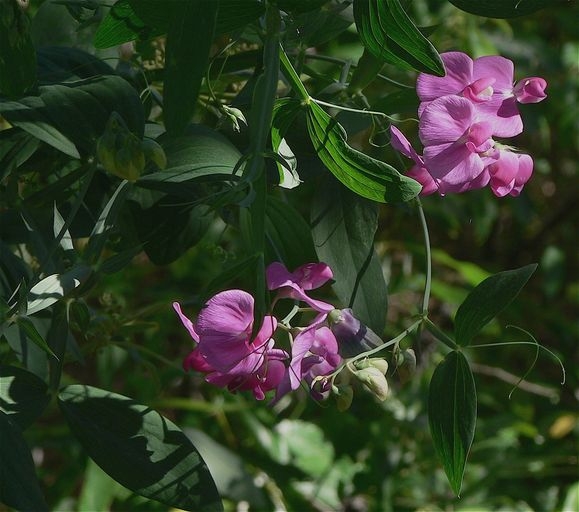Perennial Pea
(Lathyrus latifolius)
Perennial Pea (Lathyrus latifolius)
/
/

Jean Pawek
CC BY 3.0

























































Estimated Native Range
Summary
Perennial Pea is valued for its ability to cover unsightly areas quickly, its drought tolerance once established, and its minimal maintenance requirements. It is often used for ground cover, to stabilize slopes, or allowed to climb trellises and fences. It thrives in partial to full sun and adapts to a range of soil types, including loam or clay-loam, whether moist, mesic, or slightly dry. However, gardeners should be cautious as it can become pervasive and difficult to remove, potentially outcompeting native vegetation. In areas where it is invasive, such as parts of the United States, it should be planted with care or avoided altogether.CC BY-SA 4.0
Plant Description
- Plant Type: Herb, Vine
- Height: 6-9 feet
- Width: 3-6 feet
- Growth Rate: Moderate
- Flower Color: Pink, Purple, Red, White
- Flowering Season: Spring, Summer
- Leaf Retention: Deciduous
Growth Requirements
- Sun: Full Sun, Part Shade
- Water: Medium, Low
- Drainage: Fast, Medium
Common Uses
Bank Stabilization, Bee Garden, Bird Garden, Butterfly Garden, Deer Resistant, Drought Tolerant, Hummingbird Garden, Potted Plant, Salt Tolerant, Showy Flowers
Natural Habitat
Native to open woodlands and grassy slopes of Southern Europe and parts of North Africa
Other Names
Common Names: Everlasting Peavine, Everlasting-Pea, Perennial Peavine, Perennial Sweetpea, Perennial-Pea, Broadleaf Everlasting-Pea, Broadleaf Everlasting Pea, Broadleaf Peavine, Everlasting Pea, Perennial Sweet Pea
Scientific Names: , Lathyrus latifolius, Lathyrus latifolius var. latifolius, Lathyrus megalanthus, Lathyrus sylvestris var. platyphyllos, Lathyrus latifolius var. angustifolius, Lathyrus latifolius var. genuinus, Lathyrus latifolius var. neglectus, Lathyrus sylvestris subsp. latifolius, Lathyrus sylvestris var. latifolius
GBIF Accepted Name: Lathyrus latifolius L.